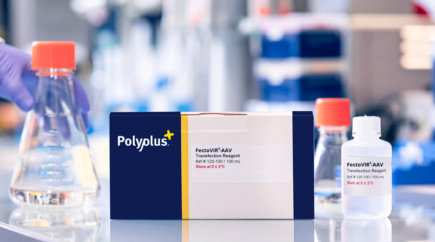Available at research and GMP grade to intensify production of recombinant AAV rAAV viral vectors at any scale from benchtop to 2000L scale bioreactor...

Setting up robust and reproducible bioprocesses is a top priority for all biotechnology companies focused on developing life changing AAV-based gene therapies. To do so, innovators crave for breakthrough technologies to maximize productivity while controlling the cost of goods (CoGs) of their AAV vector manufacturing workflow, key to accelerate the speed to commercialization of their clinical programs pipeline. Helper-free triple plasmid transfection of HEK293 cells - adherent or suspension - is the most used upstream method for AAV manufacture. Observing consistent plasmid DNA delivery among multiple production runs is critical but requires some effort as finding optimal transfection conditions for a given bioprocess is not plug and play. Still, significant advances have been recently made towards standardization of the triple transfection process. Here, we discuss how optimizing the transfection step during upstream process development leverages tremendous benefits on overall costs, robustness and scalability of an AAV production platform.
 |
About the AuthorGuillaume Freund, Ph.D. is our Scientific Support Manager at Polyplus-transfection®. After graduating from the Heriot-Watt University of Edinburgh with a Bachelor of Science, he completed a Master’s degree followed by a PhD in Biotechnology at the University of Strasbourg in the field of antibody engineering. He joined Polyplus-transfection® in September 2015. |